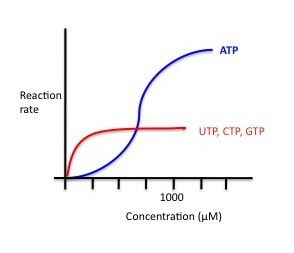mRNA synthesis rate

talk
Connecting variability in global transcription rate to mitochondrial variability, 2010
Processing of hnRNAs

Figure 1. cis and trans factors involved in pre-mRNA splicing. A) Elements involved in alternative splicing of pre-mRNA. Exons are indicated as boxes, introns as thin lines. Splicing regulator elements (enhancers or silencers) are shown as gray boxes in exons or as thin boxes in introns. The 5' splice-site (CAGguaagu) and 3' splice-site (y)10ncagG, as well as the branch point (ynyyray), are indicated (y=c or u, n=a, g, c or u). Upper-case letters refer to nucleotides that remain in the mature mRNA. Two major groups of proteins, hnRNPs (yellow) and SR or SR related proteins (orange), bind to splicing regulator elements; the protein:RNA interaction is shown in green. This protein complex assembling around an exon enhancer stabilizes binding of the U1 snRNP close to the 5' splice-site, due to protein:protein interaction between an SR protein and the RS domain of U170K (shown in red). This allows hybridization (thick red line with stripes) of the U1 snRNA (red) with the 5' splice-site. The formation of the multi-protein:RNA complex allows discrimination between proper splice-site (bold letters) and cryptic splice-sites (small gt ag) that are frequent in pre-mRNA sequences. Factors at the 3' splice-site include U2AF which recognizes pyrimidine rich regions of the 3' splice-sites, and is antagonized by binding of several hnRNPs (e.g hnRNP I) to elements of the 3' splice-site. orange: SR and SR related proteins; yellow: hnRNPs; green: protein:RNA interaction; red: protein:protein interaction; thick red line with stripes: RNA:RNA interaction. B) The RNA factory. RNA is generated after genes are recognized by transcription factors (TF) by RNA polymerase II (polII) (dark blue). Exons present on the RNA are recognized by SR proteins and hnRNPs that interact with exonic or intronic sequence elements. SR proteins interact with factors assembled around the promoter and can form protein networks across exons. SR proteins directly interact with the carboxy terminal domain of RNA polII (polII-CTD), which assembles proteins near active sites of transcription. Among polII interacting proteins is scaffold attachment factor B (SAF-B) that can couple SR proteins and RNA polII to chromatin organizing elements (S/MAR, thick green line). The processed RNA is coated with hnRNPs and transported into the cytoplasm, where it is translated into protein. SR proteins and hnRNPs are recruited from storage sites (speckles) through phosphorylation. Some SR proteins and hnRNPs shuttle between nucleus and cytoplasm. Protein shuttling can be regulated by phosphorylation or arginine methylation.